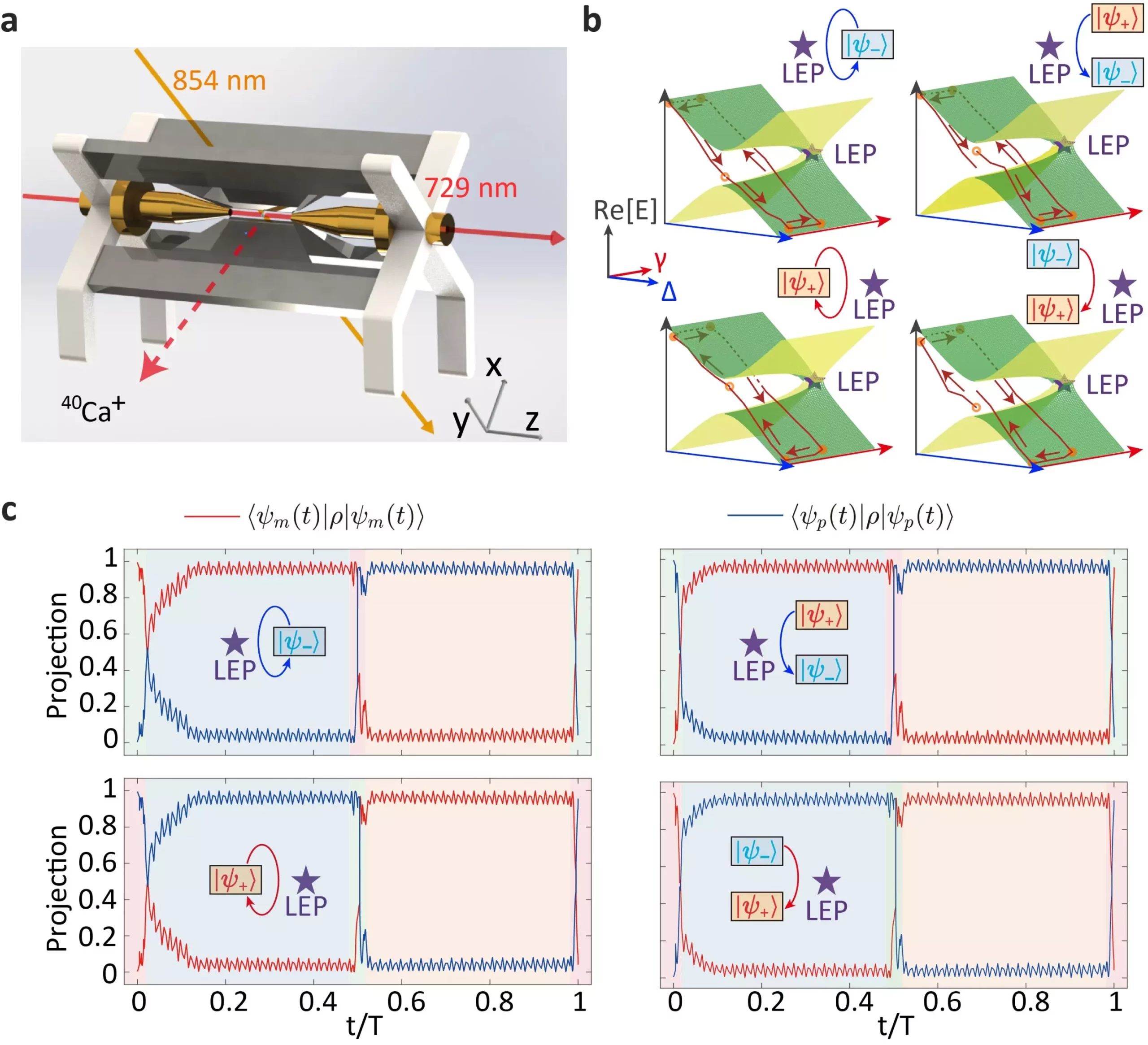In the landscape of modern engineering, heat engines remain pivotal, transforming thermal energy into productive work. As society continuously strives for greater efficiency, the exploration of quantum heat engines (QHEs) has gained traction. Recent advancements in nanotechnology offer an intriguing avenue toward enhancing our understanding of quantum thermodynamics, prompting researchers to delve deeper into the unique properties and dynamics of QHEs. These engines operate under principles significantly different from classical models, particularly through the lens of quantum mechanics, where phenomena such as energy exchange with external systems manifest in complex ways.
A hallmark of QHEs lies in their behavior as open quantum systems capable of engaging with surrounding thermal environments. This interaction prompts phenomena such as quantum jumps, which can only be accurately characterized through the concept of Liouvillian exceptional points (LEPs). Unlike traditional Hamiltonian dynamics predominantly studied in physics, LEPs unveil a novel perspective essential for understanding qubit-based QHEs. Despite their potential, thorough investigations into LEPs remain scarce within the realm of quantum thermodynamics. Their exploration is vital, as LEPs account for physical characteristics induced by these quantum jumps.
A groundbreaking study published in Light: Science & Applications by a team led by Professor Mang Feng emphasizes the potential of chiral quantum heating and cooling mechanisms. Collaborating with prominent experts from various institutions, the research highlights how non-Hermitian dynamics can illustrate unique chiral properties within quantum systems. The experiment devised an innovative setup using an optically controlled ion, demonstrating the significance of system manipulation through directed pathways in a closed loop. Shockingly, they discovered this manipulation could dictate whether the system functions as a heat engine or a refrigerator, underscoring the chiral nature of thermodynamic operations.
Integral to achieving these dynamic transitions is the Landau-Zener-Stückelberg (LZS) process, which links chirality to thermodynamic responses. The research’s findings introduce a novel connection between this process and the topological characteristics of Riemann surfaces. Such insights pave the way for understanding complex interactions in non-Hermitian systems, bridging the gap between chirality and quantum thermodynamics, allowing for more nuanced manipulations of quantum states.
The implications of these findings are immense. By establishing a foundational understanding of how chirality relates to heat exchange, researchers unlock new pathways for optimizing QHE dynamics. Enhanced efficiency in quantum technologies, including energy conversion systems and quantum computing, may soon follow. Professor Feng aptly summarizes, “This experiment paves the way for new explorations in quantum thermodynamics and the development of more efficient quantum chiral devices.”
The intersection of heat engines and quantum mechanics is a rapidly evolving field, and the study of LEPs signifies a transformative moment in the pursuit of sustainable energy solutions. As research continues, we move closer to fully harnessing the potential of quantum thermodynamics, fostering advancements that could redefine our understanding and utilization of energy systems in the future.


Leave a Reply